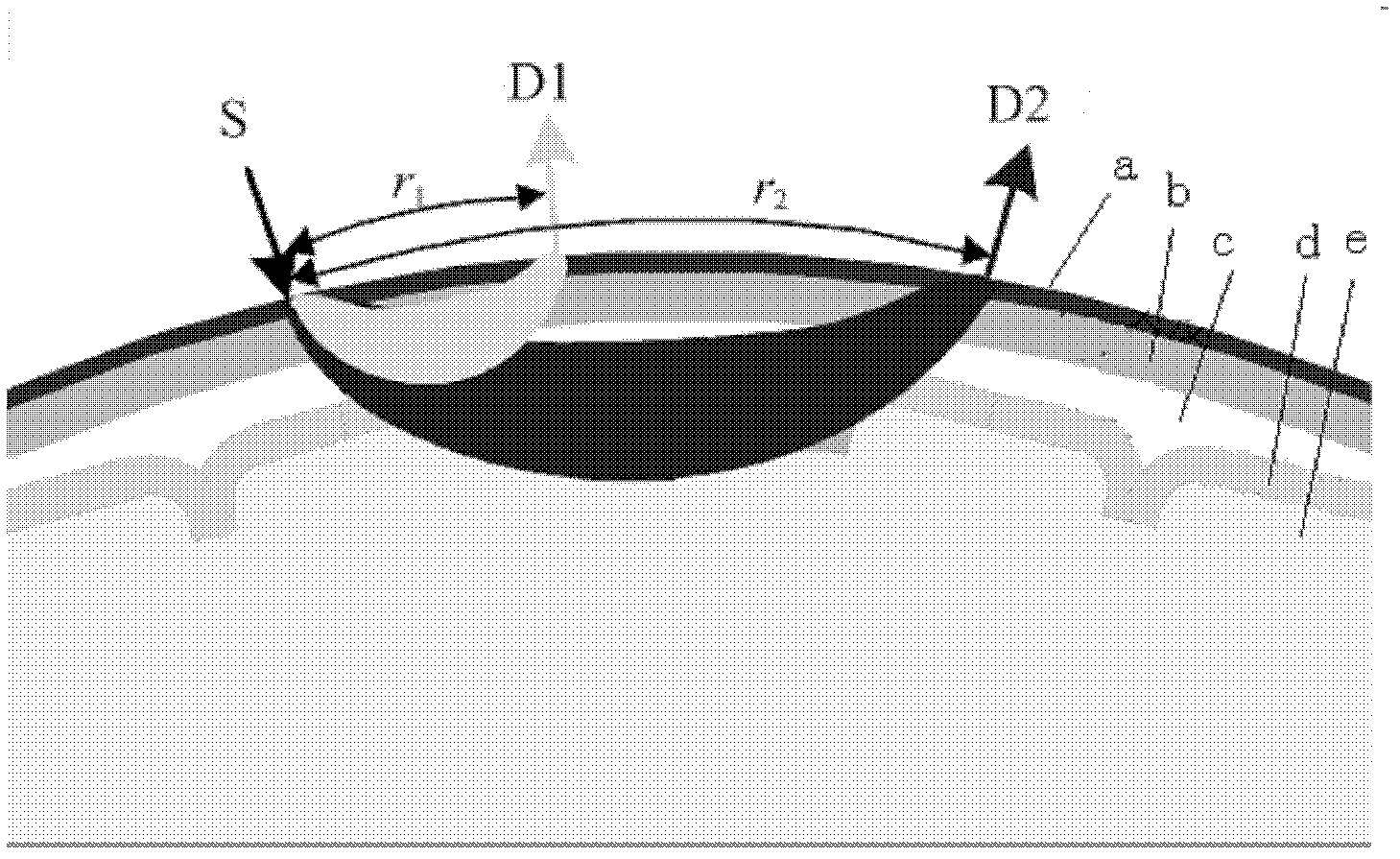Recursive least squares adaptive-filtering near-infrared brain function signal extraction method based on multi-distance measurement method
A recursive least squares, adaptive filtering technology, applied in the directions of diagnostic recording/measurement, application, medical science, etc., can solve problems such as the inability to effectively remove various physiological interferences
- Summary
- Abstract
- Description
- Claims
- Application Information
AI Technical Summary
Problems solved by technology
Method used
Image
Examples
specific Embodiment approach 1
[0034] Specific implementation mode one: combine figure 1 Illustrate this embodiment, the recursive least squares self-adaptive filter near-infrared brain function activity signal extraction method based on the multi-distance measurement method of the present invention, it comprises the following steps:
[0035] Step 1: Place a near-infrared probe consisting of a dual-wavelength light source S and detectors D1 and D2 on the surface of the scalp a of the brain tissue to be tested. The linear distance between the dual-wavelength light source S and the detector D1 is r 1 , 5mm1 2 , 30mm2 1 and lambda 2 Time series of optical density changes at time: and and k is time, k=1,2,...,N, N is a positive integer; Indicates that the straight-line distance between the dual-wavelength light source S and the detector D1 is r 1 and the wavelength is λ 1 time series of light density changes, Indicates that the straight-line distance between the dual-wavelength light source S and th...
specific Embodiment approach 2
[0061] Specific embodiment 2: The difference between this embodiment and specific embodiment 1 is that the two wavelengths emitted by the dual-wavelength light source S described in step 1 are λ 1 =760nm, λ 2 =850nm.
specific Embodiment approach 3
[0062] Embodiment 3: This embodiment differs from Embodiment 1 in that the linear distance between the dual-wavelength light source S and the detector D1 in step 1 is 10 mm, and the linear distance between the dual-wavelength light source S and the detector D2 is 40 mm.
PUM
 Login to View More
Login to View More Abstract
Description
Claims
Application Information
 Login to View More
Login to View More - R&D
- Intellectual Property
- Life Sciences
- Materials
- Tech Scout
- Unparalleled Data Quality
- Higher Quality Content
- 60% Fewer Hallucinations
Browse by: Latest US Patents, China's latest patents, Technical Efficacy Thesaurus, Application Domain, Technology Topic, Popular Technical Reports.
© 2025 PatSnap. All rights reserved.Legal|Privacy policy|Modern Slavery Act Transparency Statement|Sitemap|About US| Contact US: help@patsnap.com



